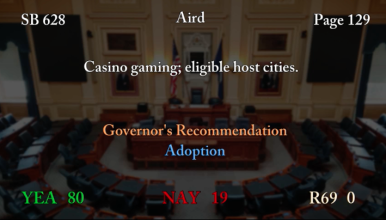Former beverage industry executive Dale Farino has been appointed the Virginia Alcoholic Beverage Control Authority‘s next CEO, effective April 29, Gov. Glenn Youngkin announced Tuesday.
Farino served as vice chair of the ABC Board of Directors, and upon his resignation from the board, his seat will be filled by L. Mark Stepanian, former owner and CEO of Loveland Distributing Co., according to the governor’s office. Last year, Farino retired as executive vice president of Sandston-based Breakthru Beverage Virginia, a wholesaler and brokerage company in the wine and spirits industry, and he previously held positions with Tidewater Wholesalers and Coca-Cola Bottling, as well as having served as president of the Virginia Wine Wholesalers Association from 2019 to 2023.
Former ABC CEO Travis Hill stepped down in November 2023 after close to a decade with the authority, which transitioned from a state department to a semi-independent authority with more autonomy in 2018. He is now a counsel for Hunton Andrews Kurth’s Global Economic Development, Commerce and Government Relations Group. ABC Chief Law Enforcement Officer Thomas Kirby served as the authority’s interim CEO.
Virginia ABC has exceeded $1 billion in annual liquor sales starting in 2018 and broken consecutive sales records each year. However, authority officials came under fire after employees embezzled money from seven ABC stores in 2022, thefts uncovered during an audit in September 2022, though ABC leaders said they didn’t learn about the embezzlement until February 2023.
“Dale Farino’s exceptional background in both national and international beverage distribution positions him perfectly to lead the Virginia ABC,” Youngkin said in a statement Tuesday. “His strategic insights and operational expertise are vital as we continue to enhance our services, increase revenues and enforce the regulations that keep Virginians safe.”
A former artillery officer in the Marine Corps and a graduate of the University of Richmond, Farino was chief financial officer, chief operating officer and vice president of operations at Breakthru.
“I could not be more excited about this selection,” said ABC Board Chairman Tim Hugo. “I have confidence that with Dale working collaboratively with the board, executive team and teammates across the authority, a successful future is imminent. While the authority contributed an impressive $12 billion to the Virginia General Fund over the past 90 years, I have no doubt Dale will lead the authority to a place of even greater profitability, sustainability and resilience in the years to come.”



